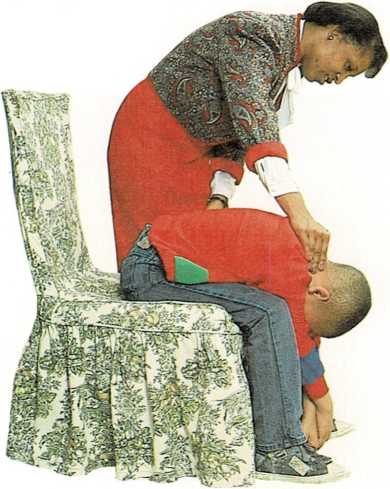Fainting – Far-sightedness
Fainting is a brief period of unconsciousness. It usually occurs
suddenly, when the blood pressure falls to a point at which the brain
does not get enough blood to maintain consciousness.
Children may feel weak and numb just before fainting. They may become
nauseated

A child who faints easily should be taught to place his or her head
between the knees as soon as fainting symptoms start.
and light-headed, have blurred vision, and appear pale. They may
salivate excessively and sweat, yawn, or sigh. Sometimes these symptoms
end in a fainting spell, but other times they do not.
If your child faints, he or she will probably remain unconscious for
only a few seconds. Place the child flat on the back. Do not put
anything under the child’s head. Loosen clothing and elevate the legs
slightly. Blood will flow back into the brain, and the child will regain
consciousness. Call a doctor if the child has fainted and does not
regain consciousness promptly.
A sudden fright or threat often causes a fainting spell. For example,
fainting may occur as a reaction to pain, or to an unpleasant sight.
Fatigue; fasting; standing motionless for long periods; hot, crowded
quarters; and many other conditions may also cause fainting. The
fainting spell usually occurs when a child is standing. It rarely
happens when the child is lying down.
Some children faint more easily than others. If your child faints
easily, teach the child to lie down or sit and place the head between
the knees as soon as the symptoms start. If in a very hot room, the
child should walk to a cooler place if possible. Children who faint
easily should be taught to avoid situations which they know may cause
them to faint.
Usually, fainting is not a sign of any serious condition. However, if
your child faints repeatedly, tell your doctor. The doctor will want to
determine the cause.
Fainting is only one cause of unconsciousness. Diabetic coma, head
injury, and poisoning are others, [m.g.]
See also Breath-holding; Coma; Convulsions: Diabetes mellitus; Head
injuries; Poisonings and poisons
Fallopian tubes. See Menstruation
Far-sightedness (hyperopia). A child who is far-sighted sees distant
objects fairly well, but near objects are blurred. The reason for this
is that a far-sighted eye is shorter from front to back than a normal
eye. Light rays from an object strike the retina of the eye
before they can be brought into focus.
Most far-sighted children see well at the beginning of a task involving
reading or other close work. But if the task is prolonged, they may
complain of blurred vision, eye discomfort, and headaches. A far-sighted
child may become inattentive and cranky after studying or watching
television or movies for too long a time.
Some children are poor readers because they are far-sighted. It is work
for a farsighted child to see because the child must focus the lenses of
the eye more than a person with normal vision in order to see clearly.
Because it is difficult to read, the child may daydream instead.
If you suspect your child is far-sighted, consult your doctor. A
complete eye examination for all children over the age of 3 is in order,
[r.o.s.]

